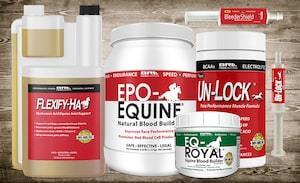
Did you know that a 1000-pound horse produces nearly 10 tons of manure per year? That adds up to 15 cubic yards a year. Yikes! No wonder your manure pile’s getting bigger; you might even have more than one. Most horse owners do. That’s because a freestanding pile is the most economical choice.
But there are two things you should consider:
- Location
- Proper management
Ask yourself this: Is it located in a place that's best for your farm, your health and your horses? If you're not sure, we’re here to help. Many horse owners don't realize the importance of manure pile location. It can affect many aspects of your farm, your barn and your livestock. It can even affect your own health.
The State of Florida has issued some best management practices when it comes to manure storage. These tips are great for horse owners everywhere. Let's take a look at them.
Why Proper Manure Management is Important
When a manure pile isn’t managed effectively, it can cause unwanted problems. That's why good management is important.
Look at some consequences:
- Manure can become a breeding area for flies and other insects.
- A manure pile can grow, and harbor, harmful bacteria.
- Manure can cause unwanted odor.
- A manure pile can be an eyesore.
- Rain can cause harmful runoff into nearby streams, lakes, rivers, and sinkholes.
All these can negatively affect the environment and have health consequences.
And you don’t want that. Let’s look at some prevention tips.
Tips for the Best Manure Pile Location
You've heard the term "location, location, location" in the real estate world. Well, it's super important when it comes to your horses' poop pile, too. While not a fun topic of conversation, it's a necessary discussion for you and your barn management team.
Here are some pointers:
- Find a place that's out of site from the public and neighbors' homes.
- Choose a flat area where there’s little to no runoff potential.
- Avoid a location near any body of water, such as lakes, streams or ponds.
- Avoid close proximity to any sinkhole(s).
- Be sure the location is convenient for easy manure disposal and close to your barn.
- The location should allow enough room for large machinery operation.
- Avoid hilly areas, or you may end up with runoff problems.
- Choose a dry area, not prone to flooding or dampness.
- Choose an area away from all residences, where increasing insects can become a nuisance.
If you're still undecided about the best location, contact your local state agricultural department. By scheduling a property inspection, they can help you determine the best location.
Since environmental issues have a direct impact on the state, it's unlikely they'll charge an inspection fee; it's still a good idea to ask before they come out, so you can avoid any unwanted fees.
Should You Cover Your Manure Pile?
Now that you've figured out the best place for your manure pile, you're probably wondering if you should cover it. Good question. During hot, dry increments, it can be left uncovered. But during rainy times, covering should be a priority.
Consider these covers:
- A medium to heavy tarp that's large enough to cover the whole pile; make sure it's secured well.
- Large pieces of pressboard or plywood can be placed against the pile in sections. Tip: Make sure the wood is treated for outdoor use.
- Construct a roofed storage area. The area needs to be large/tall enough to accommodate your large machinery.
By implementing these tips, your manure pile can be convenient for you and safe for the environment. Plus, it’ll pose few to no health risks. It's a win-win for you, your neighbors, your horses and the environment.
Top trainers, owners and competitors rely on BRL Equine products to help their horses perform at their very best. You can get the same great results! Our all-natural equine nutritional supplements really work... guaranteed or your money back!





Also in Horse Tips and More
Top 10 Ways to Show Your Horse You’re Thankful For Him
November 01, 2021
View full article →
5 Ways to Prepare Your Barn For Summer
May 03, 2021
View full article →
Your New Spring Horse Health Checklist
March 12, 2021
View full article →